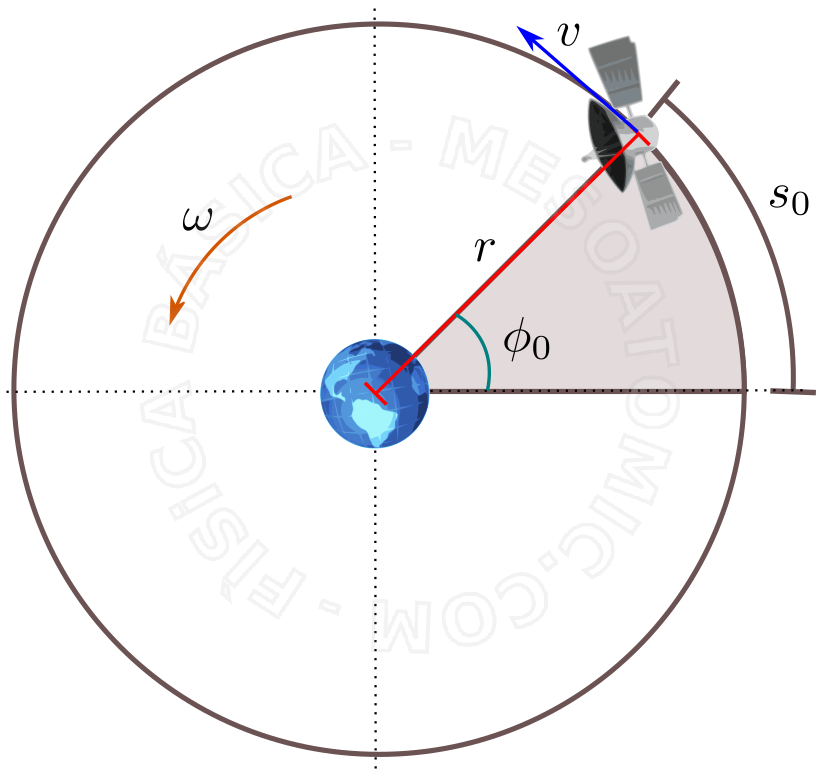- Mechanics
- /
- Kinematics
- /
- Circular motion
Circular motion is the movement whose trajectory describes a circular arc.

Introduction to Circular Motion
- Angular position \((\phi)\)
- It is analogous to linear position \( s(t) \).
Unit: \( [\phi(t)]=rad \). - Angular velocity \((\omega)\)
- It is the linear velocity analog \(v(t)\).
Unit: \( [\omega(t)] = \frac{rad}{s} \). - Angular acceleration \((\alpha)\)
- It is analogous to linear acceleration \(a(t)\).
Unit: \( [\alpha(t)] = \frac{rad}{s^2} \). - Centripetal acceleration \((\vec{a}_{c})\)
- It is the acceleration that points to the center of the circular trajectory. It keeps the body on the circular path.
Unit: \( [a_{c}]=\frac{m}{s^2} \) and \( a_{c} = r \omega^2 = \frac{v^2}{r}\). - Average angular speed \((\omega_m)\)
- \(\omega_m = \frac{\Delta \phi}{\Delta t}\).
Unit: \([\omega_m]=\frac{rad}{s}\) - Average angular acceleration \((\alpha_m)\)
- \(\alpha_m = \frac{\Delta \omega}{\Delta t}\).
Unit: \([\alpha_m]=\frac{m}{s^2}\)
All units are in the International System (\(IS\)).
We can relate this movement to a linear motion: \( s(t) = r\phi(t)\), \( v(t) = r\omega(t)\) and \( a(t) = r\alpha(t)\).
Uniform Circular Motion
It is the movement in which the angular velocity is constant and different from zero.Time related functions in uniform circular motion: \begin{align} \omega(t) &= \omega_0 \notag \\ \phi(t) &= \phi_0 + \omega_0 t \notag \end{align}
To describe a uniform circular motion, these quantities are also used:
- Period \((\tau)\)
- Time interval spent by the object to make one complete revolution.
- Frequency \((f)\) or Greaky letter \((\nu)\)
- Number of repetitions per unit of time. Unit: Hertz \([f]=\frac{1}{seconds}=Hz\) .
Period and frequency relation: \( \tau = \frac{1}{f}\).
The angular velocity relation: \( \omega = \frac{2 \pi}{\tau} = 2 \pi f\).
Non-uniform Circular Motion
It is the movement in which the angular acceleration is constant and different from zero. Its equations are analogous to the ones on the uniformly accelerated motion: \begin{align} \phi(t) &= \phi_0 + \omega_0 t + \alpha \frac{t^2}{2} \notag \\ \omega(t) &= \omega_0 + \alpha t \notag \\ \omega^2 &= \omega_0^2 +2 \alpha \Delta \phi \notag \end{align}
